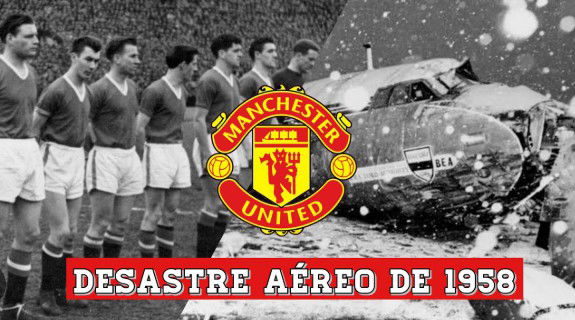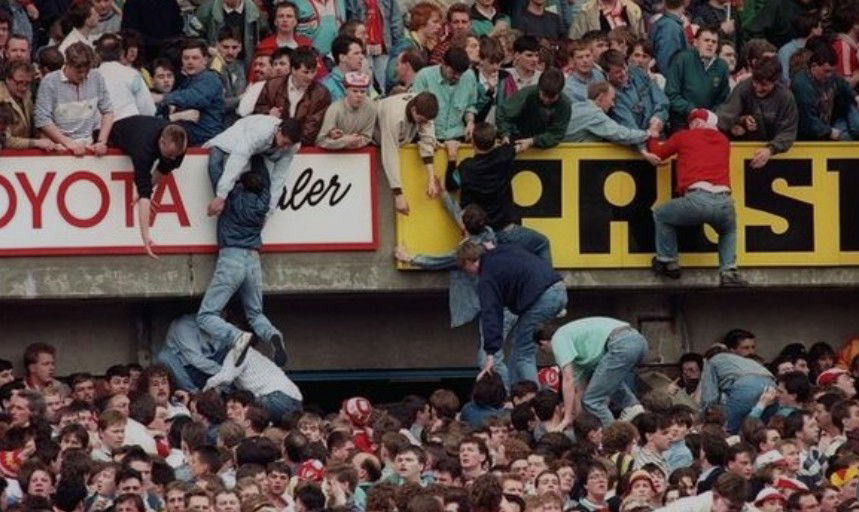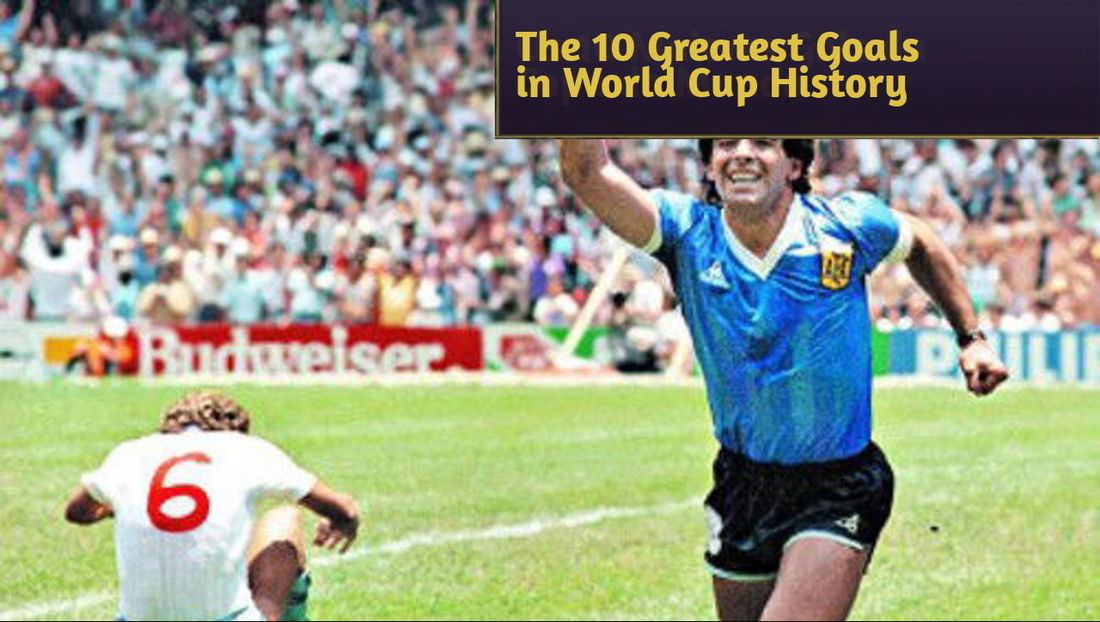Football, more than just a sport, is a passion that unites people from all over the world. However, throughout history, this love affair has also been marked by tragic episodes that have left deep wounds on players, fans and entire nations.
From fatal accidents and plane crashes to negligence and neglect that cost lives, these stories have not only saddened the world, but have also served as important lessons. They remind us of the ethical and practical responsibility that football entails, involving safety, dignity and the value of life above any competition.
In this article, we revisit some of the most notable tragedies in football history, highlighting their causes, consequences and the legacy they left.
5 - Vulture's Nest (Flamengo)

Tragedy at Ninho do Urubu: The Fire that Silenced Brazilian Football.
On February 8, 2019, Brazil woke up to devastating news: a fire destroyed part of Flamengo's Training Center, Ninho do Urubu, located in Vargem Grande, West Zone of Rio de Janeiro.
The fire reached a dormitory where the club's youth team players were sleeping. The result was 10 dead young people, aged between 14 and 16, and 3 injured.
The tragedy caused national commotion and exposed serious weaknesses in the structure and security of training centers in Brazilian football.
Who were the victims?
The ten young people who lost their lives were athletes from Flamengo's youth teams, with dreams of becoming professional players. They were all sleeping when the fire started, around 5 am.
The 10 young people killed:
Arthur Vinícius (14) – defender, born in Volta Redonda.
Athila Paixão (14) – forward, from Lagarto (SE).
Bernardo Pisetta (14) – goalkeeper, from Santa Catarina.
Christian Esmério (15) – goalkeeper, one of the biggest promises in the youth team.
Gedson Santos (14) – defensive midfielder, from Bahia.
Jorge Eduardo (15) – forward, from Rio de Janeiro.
Pablo Henrique (14) – defender, cousin of defender Werley (ex Vasco da Gama).
Rykelmo de Souza Viana (16) – known as Bolota, from Paraná.
Samuel Thomas Rosa (15) – defender.
Vitor Isaías (15) – striker, born in Florianópolis.
These young people represented the future not only of Flamengo, but also of Brazilian football.
How did the fire happen?
The fire started in one of the temporary accommodations, made up of containers adapted to house the athletes from the base. The main cause indicated by the investigations was a short circuit in the air conditioning system.
Aggravating factors:
- Absence of fire alarm;
- Absence of fire extinguishers or sprinklers in the rooms;
- Doors locked with bars, which made it difficult for young people to leave.
The makeshift accommodation had been notified by the City Hall for irregularities and had an expired license.
Reactions and national commotion:
The tragedy deeply shook Brazil and the world of football. Clubs from all over the country paid tribute. Fans, athletes, former players and directors expressed their solidarity with the families.
Flamengo declared official mourning and postponed its match in the Campeonato Carioca.
Even historic rivals such as Vasco, Fluminense and Botafogo came together in gestures of respect. The pain surpassed any rivalry.
Consequences and investigations:
After the fire, severe criticism began about the management of the training center and the accommodation conditions for young athletes. Investigations revealed that:
- The club did not have a permit to use the containers as residential space;
- Security conditions were precarious;
- Previous technical reports already warned of risks.
The Public Prosecutor's Office and the Public Defender's Office of Rio de Janeiro filed charges against the club. After months of negotiations, Flamengo reached compensation agreements with most of the families — although some are still in legal disputes to this day.
Tributes to the victims:
Since the incident, Flamengo has paid several tributes:
- Shirts with the names of the young people printed on them;
- Minutes of silence before matches;
- A symbolic and religious act every February 8th at Ninho do Urubu.
Additionally, fans created songs, flags and graffiti in memory of the so-called “10 jewels”.
How were the compensations?
General situation (until 2025):
Of the 10 families of the fatal victims, 8 reached out-of-court settlements with Flamengo. The families of Christian Esmério and Jorge Eduardo are still seeking higher amounts in court.
The survivors and their families also made financial arrangements with the club.
There are additional lawsuits filed by former executives, public bodies and the Public Prosecutor's Office.
Agreement values (estimates):
Although the club has not officially released the figures due to confidentiality clauses, it is believed that:
- Compensation ranged from R$1.2 million to R$2 million per family;
- Some families received monthly pensions until the deceased young person was 45 years old;
- Families with longer negotiations or legal proceedings achieved higher amounts.
Survivors, such as Jhonata Ventura, who suffered severe burns, also received significant amounts to cover ongoing medical treatment.
Families who refused agreements:
The families of Christian Esmério and Jorge Eduardo rejected Flamengo's offers, claiming:
- That the values offered were not compatible with the future potential of young people;
- That the club has shown resistance to fully recognizing its responsibility.
Involvement of the Public Prosecutor's Office and the Judiciary:
The Rio de Janeiro Public Prosecutor's Office proposed collective agreements with minimum amounts, but Flamengo initially resisted. The Public Defender's Office worked to support families without private legal representation.
Public and media pressure also motivated the club to treat the case with greater attention.
Criticism of Flamengo:
Even though Flamengo paid part of the compensation, it was criticized for its cold and technical stance in the negotiations.
Examples of criticism:
- President Rodolfo Landim was accused of lacking empathy;
- The club took a long time to resolve the cases, which was interpreted as a strategy to wear down the families;
- Criminal lawyers were hired by the club, which caused outrage.
The tragedy at Ninho do Urubu opened an important debate about:
- Security in training centers in Brazil;
- Care for young athletes who often live far from their families and in precarious structures;
- The responsibility of clubs to ensure dignity and safety in the accommodation offered.
The pain of the families will never be forgotten. The loss of 10 young people full of dreams has exposed the structural weaknesses and neglect that still persist in Brazilian football.
This case should continue to be a warning that the search for talent should never be greater than the protection of life.
“It wasn’t supposed to be news. It was supposed to be history.”
4 - Manchester United (England)

Munich Tragedy: The Accident That Almost Ended Manchester United.
On February 6, 1958, the football world was shocked by the tragic plane crash in Munich, Germany, which killed players, members of the coaching staff, journalists and crew on the flight taking the Manchester United team back to England.
The disaster killed 23 people, including eight players from the team known as the “Busby Babes” — a young, talented and promising group led by legendary coach Matt Busby.
It was a tragedy that nearly destroyed one of the world's greatest clubs, but it also marked the beginning of one of sport's most powerful stories of resilience.
What happened in Munich?
Manchester United were returning from Belgrade, in the former Yugoslavia (now Serbia), where they had secured a place in the semi-finals of the European Cup (now the Champions League), after drawing with Red Star.
The trip required a stopover in Munich, West Germany, for refueling. At Riem Airport, the Airspeed Ambassador plane attempted to take off three times amid heavy snowfall.
On the third attempt, the aircraft failed to reach sufficient altitude, veered off the runway and crashed into a fence and an unoccupied house. The impact was devastating.
Who lost their life?
In total, 23 people died, including:
- 8 Manchester United players;
- 3 members of the technical committee;
- 8 sports journalists, including Frank Swift (former England goalkeeper);
- Crew and club staff.
Among the players who died were Duncan Edwards (considered one of England's greatest talents), Roger Byrne, Tommy Taylor and David Pegg.
Coach Matt Busby was seriously injured and had to receive last rites, but miraculously survived.
Before the accident, Manchester United were enjoying a magical moment. The “Busby Babes” were young players promoted from the youth academy and were revolutionising English football:
- They had won two consecutive English league titles;
- They were favorites in the Champions Cup;
- They played attacking and innovative football.
The tragedy interrupted a project that seemed destined for worldwide glory.
The reconstruction of the club:
Despite the tragedy, Manchester United chose to continue the season. While Matt Busby recovered, assistant manager Jimmy Murphy took charge.
With youngsters from the academy, returning veterans and players on loan, the team reached the FA Cup final, where they lost to Bolton.
Redemption came 10 years later in 1968 when the club won the European Cup with Matt Busby in charge and Bobby Charlton — a Munich survivor — as captain.
Causes of the accident:
The investigations pointed out the following main factors:
- Accumulation of slush (melted snow) on the runway;
- Loss of speed due to adverse weather conditions;
- Assessment error at the time of takeoff.
Important: mechanical failure or overload were initially considered, but these hypotheses were discarded.
The Munich tragedy has become part of Manchester United's identity.
- A clock at Old Trafford stadium reads the time of the accident: “3:04 PM – 6 February 1958”;
- Ceremonies and tributes are held annually by the club;
- Fans nicknamed the dead players “The Flowers of Manchester”.
The Munich tragedy was more than a sporting loss — it was a deep wound to the heart of football. Yet it was also the birth of a story of resilience, loyalty and rebuilding.
Manchester United not only survived, but were reborn, carrying the name of young talent with each achievement.
[m]{“We’ll never die!”
3 - Lima Alliance (Peru)

On December 8, 1987, Peruvian football suffered its greatest tragedy. The Peruvian Navy plane carrying the Alianza Lima team crashed into the Pacific Ocean, just a few kilometers from Lima.
There were 43 people on board, including players, coaching staff, directors and crew. Only one survivor was rescued alive. The emotional and sporting impact was immense, affecting not only the club but the entire Peruvian nation.
What happened on the Alianza Lima flight?
The team was returning from a game in Pucallpa, where they beat Deportivo Pucallpa 1-0 in the Peruvian Championship. The Fokker F-27 military aircraft, operated by the Navy, developed problems:
- The landing gear did not respond correctly;
- The pilot reported technical failures and attempted to return to the airport;
- Due to low visibility and navigation difficulties, the plane crashed into the Pacific Ocean a few kilometers from Jorge Chávez International Airport.
Who survived and who were the victims?
Only Edilberto Villar, the plane's co-pilot, survived the crash, swimming to shore. No player or coaching staff member escaped alive, and many families lost more than one relative at a time.
Among the dead were 16 professional players, as well as members of the coaching staff, managers and masseurs. Many of them were promising young players, expected to join the Peruvian national team in the following decade.
The pain was made worse by the fact that Alianza Lima was leading the championship at the time, with a great chance of becoming champion.
The national impact:
The tragedy shook Peru deeply. The population was plunged into mourning, and football came to a complete halt. Alianza Lima, one of the country's most traditional clubs, lost almost its entire main squad, causing a commotion that went beyond the sport.
Several South American clubs offered their help. One of the most emblematic gestures came from Colo-Colo (Chile), which loaned players so that Alianza could complete the season. This gesture created an everlasting friendship between the two clubs.
Causes of the accident:
Investigations revealed serious flaws such as:
- Landing gear problems;
- Human error during emergency procedures;
- Lack of modern equipment and radars at Lima airport;
- Inadequate maintenance of the Fokker F-27 military aircraft, operated by the Peruvian Navy.
The lack of transparency from the authorities generated outrage among the victims' families and fueled theories and suspicions about what happened.
The reconstruction of the team:
With few resources, Alianza Lima needed to rebuild its team on an emergency basis:
- Promoted youngsters from the youth team to the main team;
- Received players on loan from Colo-Colo;
- Recruited former players who came out of retirement to help the club.
Despite the difficulties, the club managed to remain in the elite of Peruvian football and gradually became competitive again.
The 1987 tragedy became a landmark in the history of Alianza Lima. Every year, on December 8, the club pays tribute to the victims:
- Masses and religious ceremonies;
- Minutes of silence before matches;
- Special shirts and other tributes.
The names of the victims are immortalized in the club's memory. They are remembered as warriors who left us too soon, but left a legacy that transcends sport.
Even with the scars, Alianza Lima managed to rise again, maintaining its resilient spirit and adding even more meaning to its fans' love for the club.
“Alianza Lima, always in our hearts. Those who have left today play among the stars.”
2 - Hillsborough Tragedy

On April 15, 1989, the world of football witnessed one of its greatest tragedies. The Hillsborough disaster, which occurred in Sheffield, England, during the FA Cup semi-final between Liverpool and Nottingham Forest, resulted in the deaths of 97 Liverpool fans.
What was supposed to be a major sporting event turned into a chaotic scene, marked by negligence and bad decisions that cost innocent lives.
How did the Hillsborough tragedy happen?
Overcrowding in the Leppings Lane section, reserved for Liverpool fans, was at the root of the problem. In an attempt to ease the crowds outside the stadium, police opened a gate, allowing hundreds of people to rush into an already crowded space.
Fans were pressed against the metal fences that separated the stands from the pitch. With no escape routes, many were crushed. The tragedy unfolded in front of the cameras and was broadcast live, shocking the world.
The victims:
The tragedy left 96 dead at the scene and hundreds injured. Years later, one of the victims who was in a coma died, bringing the total number of deaths to 97.
Most of the victims were young Liverpool fans, including children. The lack of a quick response from medical services further aggravated the consequences.
Initially, both the police and the press blamed the fans themselves. Sensational headlines suggested that the fans were drunk and were blamed for the overcrowding. The tabloid newspaper The Sun was widely criticised for its false accusations.
The Taylor Report (1990) later concluded that the main fault lay with South Yorkshire Police, who failed to manage the situation and ensure safety.
Justice for the 97:
The victims' families fought for decades to clear the names of the dead and seek justice. In 2012, new investigations revealed that:
- The police manipulated evidence;
- The emergency system has failed seriously;
- The fans were not to blame.
In 2016, a jury ruled that the 97 fans had been “unlawfully killed.” However, no police commander has been effectively punished, leading to frustration among the families.
The Hillsborough Legacy:
The disaster resulted in significant changes in English football:
- Stadiums were modernized, being required to have individual seats (all-seater model);
- Security protocols have been reformulated;
- The episode became a symbol of resistance against institutional neglect.
Hillsborough is not just a sad memory, but a timeless cry for such tragedies to never happen again. In the hearts of Liverpool fans, the 97 will never be forgotten. The club holds annual tributes, ensuring their memories live on.
“You’ll Never Walk Alone – 97. We’ll Never Forget.”
1 - Chapecoense 2016

On the night of November 28, 2016, world football faced one of its most tragic days. The plane carrying the Chapecoense delegation to the final of the Copa Sudamericana in Colombia crashed minutes before landing.
Of the 77 people on board, 71 lost their lives. Only 6 survived. The pain was immense, but the solidarity of clubs, fans and nations showed that football is one big family.
Chapecoense had an incredible campaign, challenging giants of the continent, such as Independiente and San Lorenzo, to reach the final of the Copa Sudamericana against Atlético Nacional, from Medellín.
The trip represented more than a game: it was the realization of a collective dream.
How was the Chapecoense accident?
LaMia flight 2933 departed from Santa Cruz de la Sierra (Bolivia) and faced serious problems:
- The pilot did not carry enough fuel to complete the journey safely;
- The plane ran out of fuel moments before landing;
- Without power, the aircraft crashed in a mountainous area near Medellín.
Survivors:
Among the 6 survivors were:
- Alan Ruschel (full-back);
- Jakson Follmann (goalkeeper, who had a leg amputated);
- Neto (defender, rescued hours later);
- Rafael Henzel (journalist, who passed away in 2019);
- Two Bolivian crew members.
Global commotion:
The tragedy moved the world:
- Several clubs paid tribute;
- Atlético Nacional requested that the competition title be given to Chapecoense;
- Stadiums held minutes of silence across the planet.
Solidarity and gestures of support quickly became examples of unity in sport.
Causes and consequences:
Investigations have shown that...
- LaMia, the company responsible for the flight, operated with serious irregularities;
- The pilot failed to comply with safety protocols by not carrying sufficient reserve fuel, which is essential for international flights;
- The aircraft's maintenance showed serious deficiencies;
- Bolivian authorities were negligent in approving the flight plan.
After the tragedy, LaMia was banned, and several of its officials faced legal sanctions. However, the lack of concern for air safety in less favored regions of South America has become a global warning.
The reconstruction of Chapecoense:
Chapecoense faced the challenge of rebuilding itself while mourning. The club received support in several ways:
- Clubs from all over Brazil offered players on loan for free;
- Some veteran athletes offered to play at no cost;
- The fans remained firm, supporting the team's reconstruction and keeping the memory alive.
Despite the difficulties, the club was reborn:
- Won the Santa Catarina Championship;
- Guaranteed its return to Series B and, later, to Series A of the Brazilian Championship;
- He played in international tournaments again, such as the Libertadores.
Tributes around the world:
The Chapecoense tragedy caused international commotion:
- The day after the accident, more than 40,000 Atlético Nacional fans filled the Atanasio Girardot Stadium in Medellín to pay an emotional tribute to Chapecoense with songs, candles and messages of solidarity;
- Memorials were created in Brazil and Colombia, immortalizing the names of those who passed away;
- Documentaries such as “Para Sempre Chape” were produced to pay tribute to the team’s legacy.
The Chapecoense accident was not just a sporting tragedy, but a demonstration of how negligence and lack of preparation can cost lives. At the same time, the unified response of the football community and millions of people around the world showed that even in grief, solidarity can emerge as a symbol of hope.
The rebuilt Chapecoense carries with it the memory of those who have passed away and the pride of representing a club that has never been abandoned by its fans or the international community.
“Come on, come on, Chape! We will never abandon you.”












— Kommentare 0
, Reaktionen 1
Sei der erste der kommentiert